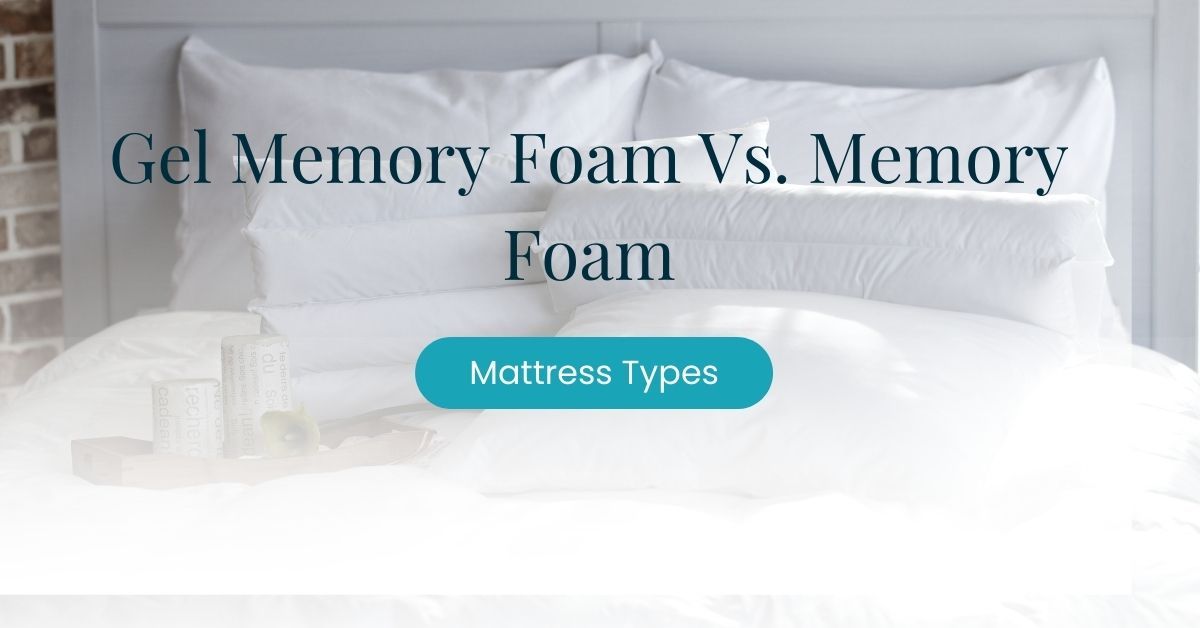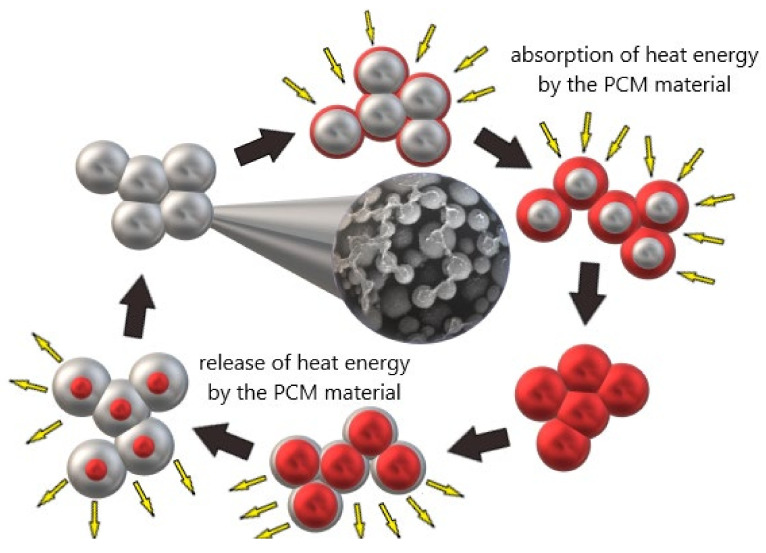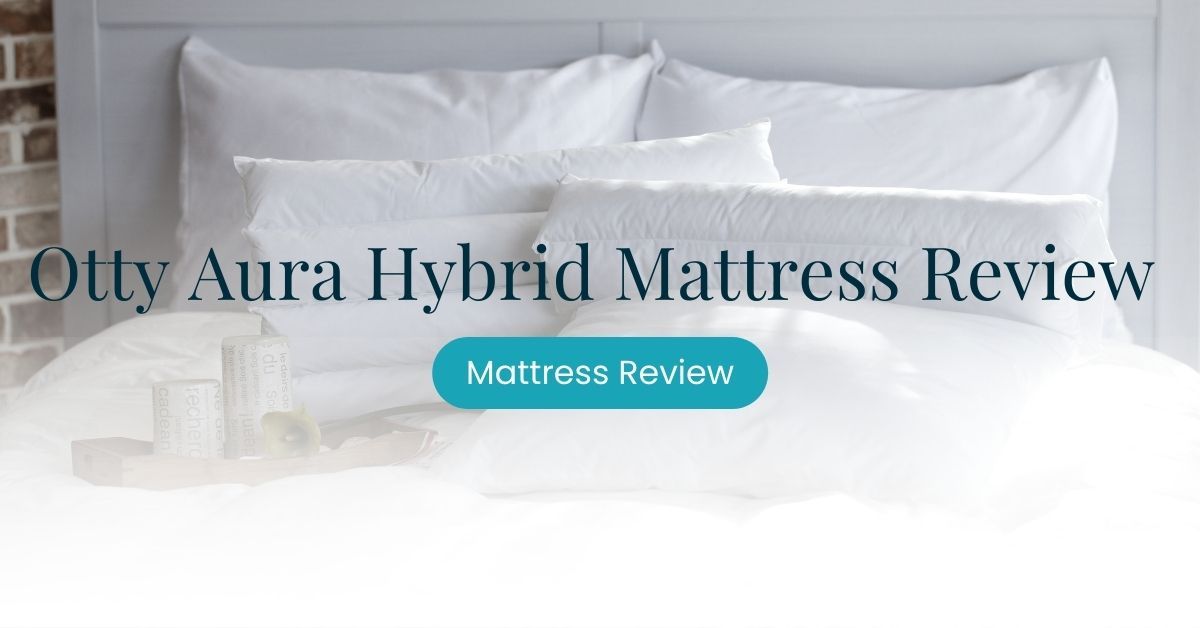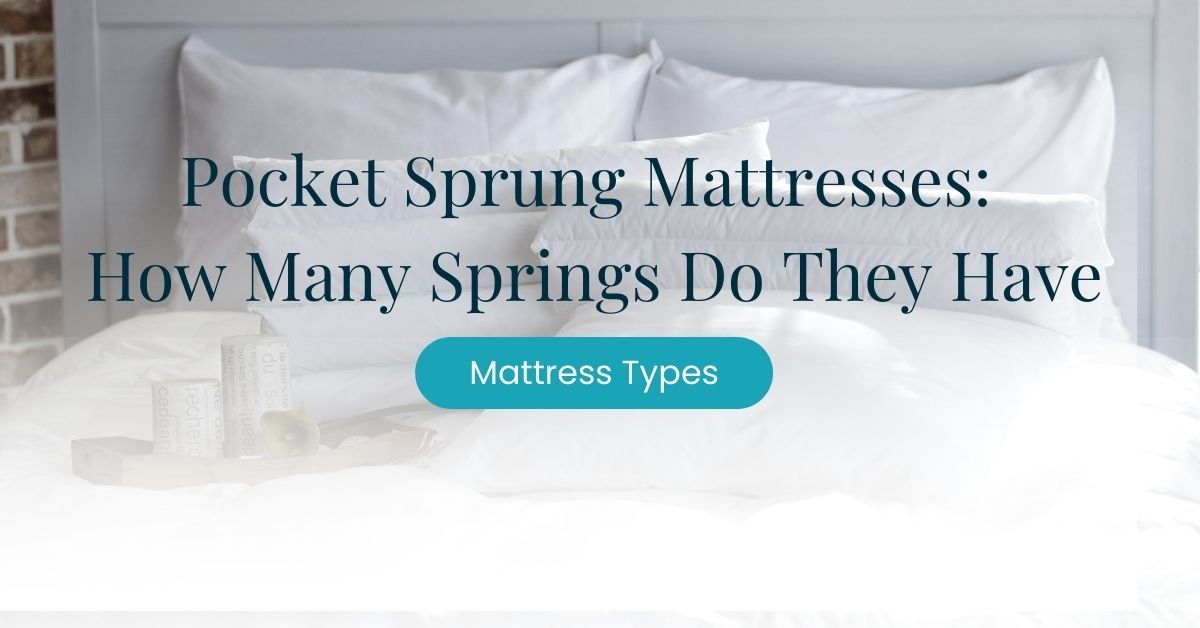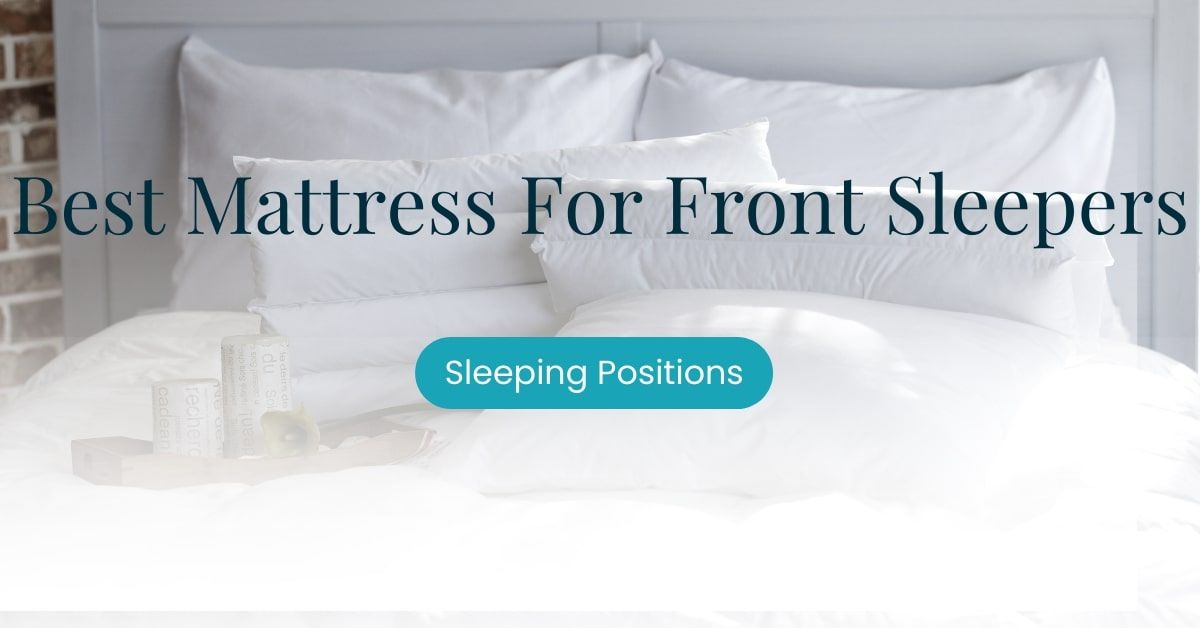Are you struggling to decide between memory foam and gel-infused memory foam mattresses? With a myriad of choices in the market, it’s essential to understand the key differences and similarities to make the best decision for your sleep.
In this in-depth guide, we’ll explore the world of memory foam and its cooler counterpart, gel-infused memory foam. You’ll read about unique features, such as conformity, motion isolation, and temperature regulation, and highlight some minor differences like price and bounce.
By the end, you’ll have a clear understanding of standard memory foam and gel memory foam, and you’ll be able to determine which type of mattress best suits your sleeping needs.
Memory Foam Mattress Overview
Originally developed at NASA’s Ames Research Center for shock absorption in space expeditions, memory foam mattresses have become popular in the bedding industry. Made from polyurethane foam (PU), memory foam, also known as “viscoelastic” polyurethane foam or low-resistance polyurethane foam (LRPu), adapts to a sleeper’s body using their heat.
Memory foam’s viscosity refers to its ability to change shape under pressure, while elasticity pertains to its capacity to return to its original shape. There are two main types of memory foam mattresses:
- Traditional memory foam: consists of closed cells that trap heat
- Open-cell memory foam: features spongy passages allowing heat to escape
Over the years, manufacturers have altered memory foam’s structure to address its heat retention issue. By injecting air into the material, they created an open-cell structure designed to improve airflow and enhance breathability.
These open-cell memory foam mattresses sleep cooler while maintaining body-conforming and pressure-relieving properties. Additionally, gel memory foam was introduced as another temperature-regulating alternative in the mattress market.
gel memory foam Overview
A gel foam mattress uses either thermal gel or phase-changing materials (PCM), usually small gel beads or micro-particles, to reduce heat retention common in memory foam. From the name itself, this gel changes its phase in a cycle by
- changing from a solid to a liquid as it absorbs excess heat from the body and stores that heat and
- changing from a liquid to solid as it releases the stored heat
What is the advantage of gel-infused memory foam?
Gel-infused memory foam offers enhanced support for your lower back and neck, while also increasing the mattress’s responsiveness, allowing it to return to its original shape more quickly. Moreover, the gel infusion helps dissipate heat, maintaining a cooler sleeping surface and regulating the temperature between your body and the mattress.
It’s important to note that the gel-infusion can be used in other types of mattresses such as latex foam, or in hybrid innerspring mattresses.
5 Key Similarities Between Memory Foam and Gel Memory Foam Mattresses
Since gel memory foam is an improved version of traditional memory foam, they have similar properties and benefits.
Gel memory foam is an enhanced version of traditional memory foam, sharing several properties and benefits.
1. Contouring and Support
Both mattress types offer a hugging sensation as the foam conforms to your body shape, providing support to key pressure points such as your hips, shoulders, and back. This feature is particularly beneficial for side sleepers.
Additionally, mattresses made of polyurethane foam mould to your unique sleeping position, providing the head and neck support each sleeper needs.
2. Motion Isolation and Stability
Motion isolation refers to whether movement on one part of the mattress affects other parts. Both memory foam and gel memory foam excel in this area, making them suitable for couples. The dense foam also offers more stability compared to non-foam mattresses, preventing disturbances from a partner’s movements during sleep.
Watch this video to see it in action:
3. Quietness and Durability
As both gel-infused and regular memory foam mattresses lack springs, they’re quieter than innerspring or pocket coil mattresses. This characteristic benefits light sleepers and those who share a bed.
Furthermore, memory foam and gel memory foam mattresses are known for their durability and ability to maintain their shape over time, resulting in consistent support and comfort.
4. Off-gassing and Hypoallergenic Properties
Off-gassing refers to the initial chemical odour from new mattresses, which are byproducts of synthetic foam manufacturing materials. Both memory foam and gel memory foam mattresses can have an off-gassing odour that typically dissipates after a few days of airing out.
On the other hand, both mattress types are resistant to allergens, dust mites, and mould, making them suitable for individuals with allergies or sensitivities.
5. Customisable Firmness and Pain Relief
New memory foam mattresses offer various firmness levels to cater to different sleeping preferences. Both memory foam and gel foam mattresses are designed to provide mouldable back and neck support, reducing achy joints and muscles.
This makes them a good choice for back-pain sufferers, as the body-conforming memory foam enhances lumbar support and alleviates lower back pain.
2 Differences Between Memory Foam and Gel Memory Foam
Now, let’s talk about the main difference between memory foam and a gel memory foam mattress.
1. Temperature regulation
A key difference between memory foam and gel memory foam mattresses lies in their ability to regulate temperature. To address the heat retention issue often associated with traditional memory foam, gel memory foam was developed. The cooling gel within the mattress actively draws heat away from you, ensuring better temperature regulation while you sleep.
Research indicates that temperature significantly affects sleep quality, with optimal sleep occurring at 32 °C. Sleep quality decreases at higher temperatures, such as 36 °C and 38 °C.
2. More responsive
Gel memory foam mattresses are generally more responsive than traditional memory foam due to the presence of gel. As a result, they can return to their original shape faster than memory foam, especially when it comes to high-density memory foam, where the response time tends to be longer.
If you’re a combination sleeper who changes positions frequently throughout the night, you might find gel memory foam mattresses more suitable, as they offer a less “stuck-in-the-mud” sensation when adjusting positions.
3. Price
Gel memory foam mattresses are usually more expensive than traditional memory foam mattresses, primarily because of the added cooling gel and advanced production technology. If you highly value better temperature regulation and improved responsiveness, the extra cost might be justified.
4. Appearance
While traditional memory foam mattresses have a uniform colour and appearance, gel memory foam mattresses often exhibit a marbled or speckled look due to the cooling gel beads or swirls within the foam. This visual distinction doesn’t affect the mattress’s performance but could be noticeable when comparing the two types.
5. Weight
Owing to the added gel content, gel memory foam mattresses tend to be slightly heavier than traditional memory foam mattresses. Although this difference in weight can be a consideration when moving or rotating the mattress, it generally doesn’t impact the mattress’s overall performance or lifespan.
Other Cooling Alternatives For Memory Foam
To address the issue of overheating in traditional memory foam beds, mattress manufacturers have developed various alternatives, including:
- Enhanced Construction: Mattresses featuring convoluted air channels or zoned systems promote improved airflow and breathability, targeting ventilation where it’s needed most.
- Cooling Additives: Memory foam mattresses infused with heat-conducting additives such as copper, graphite, charcoal, or green tea effectively regulate temperature by drawing heat away from the body.
- Plant-Based Memory Foam: By substituting a portion of petroleum with plant-based oils like castor oil, a more breathable and responsive foam is created, helping to keep you cooler.
- Innovative Cover Materials: Mattress covers made with advanced materials like FDA-determined Celliant®, Tencel, and bamboo fabric transform body heat into energy or wick away moisture, ensuring a cooler sleep experience throughout the night.
What is more comfortable: gel or memory foam?
Gel memory foam mattresses and memory foam mattresses offer comfortable and contouring support. But if you’re confused about what to get, here are some tiebreakers:
- If you’re a hot sleeper, go for a gel memory foam mattress.
- If you’re one of the 80% of women experiencing hot flashes because of menopause, go for a gel memory foam mattress.
- If you suffer from any of the following that causes night sweats: mood disorders, gastroesophageal reflux disease, hyperthyroidism, and obesity.
- If you change positions at night, go for a gel memory foam mattress.
- If you want and need the warmth of the foam, go for a memory foam mattress.
Other Mattress Types You Can Consider
Before deciding between gel foam vs. memory foam, it’s essential to explore all available options to find the perfect mattress for your needs. Consider these alternative mattress types:
- Innerspring mattresses: Budget-friendly and widely available, these mattresses consist of a plush top layer, coils, and a foam base, offering sleepers an affordable alternative to more luxurious gel or memory foam mattresses.
- Pocket sprung mattresses: Similar to innerspring mattresses, pocket sprung mattresses feature individual fabric-wrapped coils that respond independently to pressure, providing tailored support and reducing motion transfer.
- Latex mattresses: More expensive but eco-friendly, latex mattresses contour to your body like memory foam but provide a cooler and bouncier sleeping experience.
- Hybrid mattresses: Combining elements from foam and innerspring mattresses, hybrids have 2 to 3 inches of foam on top of a coil layer, offering optimal comfort. The top layer can be memory foam, gel foam, latex foam, or poly-foam.
Many foam mattresses incorporate alternative elements to enhance comfort. For example, some hybrid mattresses feature memory foam and gel pods, combining the benefits of various mattress types.
If you’re shopping on a tight budget or want to modify your current mattress’s feel, consider a mattress topper. Toppers add a few extra inches of foam, creating a softer or firmer feel. Memory foam or gel memory foam toppers are available at a fraction of the cost of a new mattress, making them an economical solution for enhancing your sleep experience.
Frequently Asked Questions
Are gel mattresses cold in winter?
As mentioned, PCMs in the gel memory foam work by absorbing excess heat from the body, releasing that stored heat, and adapting to the environment temperature.
For example, when you’ve been lying on a gel memory foam mattress for a while, it will feel soft and warm under your body heat. The foam will stiff up again and adjust to room temperature when you get out of bed. These gels are similar to gel packs on freezers.
So if it gets cold in your room in the winter, your gel mattress can also get cold. If this is the case, you can use thick blankets alive your mattress for a more comfortable sleeper surface in the winter.
Is gel memory foam toxic?
Isocyanates are found in polyurethane products, which are gel memory foam and memory foam. Exposure to this chemical can cause irritation of the eyes, nose, throat, and skin.
It might sound scary that this chemical is present in most household items, and even more when talking about our mattresses. But certificating bodies are here to test for chemical emissions and content.
They can certify mattresses that pass the standards. These like some certifications you should look out for: GREENGUARD Gold, OEKO-TEX, CertiPUR-US, eco-INSTITUT.
You can check out natural latex mattresses if you want a natural way to go with mattresses, it’s less conforming and more responsive but are the most eco-friendly mattress.
How long do gel memory foam mattresses last?
According to a survey of 25,000 mattress users, the average lifespan of a memory foam mattress is around 7 years. But how many synthetic materials are used greatly affects a memory foam mattress’s lifespan.
And since a gel memory foam mattress contains additional gel materials, we may expect its lifespan to be shorter than a memory foam mattress.
This can also be seen in how long a gel memory foam mattress warranty period is. The warranty period usually means the manufacturer intended the mattress to last that long. For example,
Studio by Silentnight Original Mattress offers a 3-year warranty
Happy Beds Ocean Gel provides a 5-year warranty
9 Sources
- Abad, V., & Guilleminault, C. (2003, December). Diagnosis and treatment of sleep disorders: a brief review for clinicians. Retrieved from National Center for Biotechnology Information:
https://www.ncbi.nlm.nih.gov/pmc/articles/PMC3181779/ - Bryce, C. (2020, October 1). Persistent Night Sweats: Diagnostic Evaluation. Retrieved from National Center for Biotechnology Information:
https://pubmed.ncbi.nlm.nih.gov/32996756/ - Forty-Year-Old Foam Springs Back With New Benefits. (2005). Retrieved from NASA Spinoff:
https://spinoff.nasa.gov/Spinoff2005/ch_6.html - Krebs, M., & Hubel, R. (2016). The Adjustment of Physical Properties of Viscoelastic Foam – the Role of Different Raw Materials. Retrieved from Semantics Scholar:
https://www.semanticscholar.org/paper/The-Adjustment-of-Physical-Properties-of-Foam-%E2%80%93-the-Krebs-Hubel/bdd7e36f258fa75cd0452befe1b059268774e0b2 - Łach, M., Pławecka, K., Bąk, A., Adamczyk, M., Bazan, P., Kozub, B., . . . Lin, W.-T. (2021, October 13). Review of Solutions for the Use of Phase Change Materials in Geopolymers. Retrieved from National Center for Biotechnology Information:
https://www.ncbi.nlm.nih.gov/pmc/articles/PMC8538999/ - Zheng, G., Li, K., & Wang, Y. (2019, January). The Effects of High-Temperature Weather on Human Sleep Quality and Appetite. Retrieved from National Center for Biotechnology Information:
https://www.ncbi.nlm.nih.gov/pmc/articles/PMC6351950/ - Bansal, R., & Aggarwal, N. (2019, January). Menopausal Hot Flashes: A Concise Review. Retrieved from National Center for Biotechnology Information:
https://www.ncbi.nlm.nih.gov/pmc/articles/PMC6459071/ - Isocyanates. (n.d.). Retrieved from United States Department of Labor:
https://www.osha.gov/isocyanates - Mattress Longevity / Lifespan Comparisons. (2017, April 7). Retrieved from Sleep Like the Dead:
https://www.sleeplikethedead.com/mattress-longevity.html


